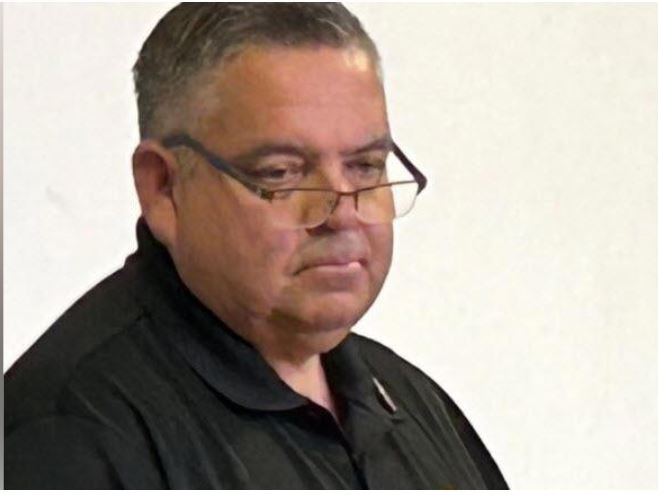Advances in DNA detailed in trial
Springfield News-Leader (Missouri), MAIN; Pg. A1
BYLINE: Amos Bridges
Clayton, MO
Clayton -- Testimony in Gerald Carnahan's first-degree murder trial moved into the 21st century on Friday as witnesses were questioned about attempts to develop DNA evidence in 2003 and 2007.
DNA profiling was not available when the body of Carnahan's alleged victim, Jackie Johns, was recovered from Lake Springfield in June 1985.
But Greene County prosecutors have said evidence collected then -- specifically a vaginal swab made during Johns' autopsy -- was key to charging Carnahan in 2007 with Johns' rape and murder.
Witnesses who testified earlier in the week talked about how the evidence was collected and stored until about 1990, with defense attorneys frequently challenging storage methods and chain of custody.
On Friday, Springfield Police Sgt. Bryan DiSylvester testified about his work on the case in 2002 and 2003.
DiSylvester said that after conducting an inventory of the evidence stored in the department's property room, he sent three items -- a vaginal swab, a smear created from the swab in 1985 containing several intact sperm, and a sample of Johns' blood -- to a New Orleans lab that specialized in DNA testing.
Gina Pineda, who worked as a supervisor at the lab in 2003, said analysts there were unable to develop an identifiable profile using the technology available at the time.
But Pineda testified that she had reviewed the tests done four years later by a Missouri Highway Patrol analyst and agreed with his findings.
That analyst, Jason Wyckoff, is scheduled to testify Monday about tests he did allegedly linking male DNA from the vaginal swab to a DNA sample taken from Carnahan in 2007 by patrol Trooper Dan Nash.
Nash, a cold case investigator who reexamined the Johns case in 2006 and 2007, said Friday that "technology had improved to such a degree that I thought it would be beneficial to resubmit some of these items."
cross-examinations
The condition of the evidence and the way it was stored came under scrutiny throughout the day during cross-examinations by defense attorneys Adam Woody and Joe Passanise.
Woody, questioning DiSylvester, cited a letter from Springfield detective Bill Thomas (who worked the case in the late '90s) that accompanied several pieces of evidence Thomas sent to the patrol crime lab in 1999.
"I don't pretend to know the way in which this evidence was stored ...," Woody said, quoting from Thomas' letter.
But DiSylvester said he thought Thomas was referring to how the items were stored in the department's property room, which was not refrigerated, rather than implying they had not been kept securely.
"I do not see or get anything in context pertaining to chain of custody," DiSylvester said. "He's concerned about the storage of it ... that's my interpretation."
The lack of refrigeration came up again during Passanise's cross-examination of Pineda.
Pineda, who provided a summary of the DNA examination process for the jury, said the testing company, called ReliaGene Technologies, was unable to develop a complete DNA profile from either the vaginal swab or smear, due to "insufficient or excessively degraded" DNA.
The degradation, she said, could have been caused or exacerbated by heat, she said. But Pineda stressed repeatedly that, while degradation can make it difficult or impossible to detect a DNA profile, "you just won't get a result ... "It never makes one DNA profile into another profile."
Pineda said that while technology used at ReliaGene in 2003 was cutting edge, "there were significant changes in the field" in the four years that followed.
She said that after reviewing Wyckoff's 2007 work, she agreed completely with his conclusions. She also rebuffed Passanise's suggestion that subjectivity or bias could have affected the results.
"I didn't see any bias," she said. "There's no bias when you compare one profile to another and it matches."
While most of the defense questions appeared to be attempts to poke holes in the validity of the DNA evidence, one line of questions suggested another tactic.
The defense so far has not suggested that Carnahan had sex with Johns before she disappeared. But Passanise on Friday asked if the DNA from the vaginal swab allegedly linked to Carnahan could have been deposited as much as a week before her death.
Pineda acknowledged that "DNA does not give you a time line" of when the sperm was introduced into the sample.
But she said "in sexual assault cases," the technology in use at ReliaGene in 2003 would have detected DNA from sperm present no more than three days before it was collected.
- - - - - - - - - - - - - - - - - - - - - - - - - - - - - - -
International Association for Property and Evidence
"Law Enforcement Serving the Needs of Law Enforcement"
www.IAPE.org
BYLINE: Amos Bridges
Clayton, MO
Clayton -- Testimony in Gerald Carnahan's first-degree murder trial moved into the 21st century on Friday as witnesses were questioned about attempts to develop DNA evidence in 2003 and 2007.
DNA profiling was not available when the body of Carnahan's alleged victim, Jackie Johns, was recovered from Lake Springfield in June 1985.
But Greene County prosecutors have said evidence collected then -- specifically a vaginal swab made during Johns' autopsy -- was key to charging Carnahan in 2007 with Johns' rape and murder.
Witnesses who testified earlier in the week talked about how the evidence was collected and stored until about 1990, with defense attorneys frequently challenging storage methods and chain of custody.
On Friday, Springfield Police Sgt. Bryan DiSylvester testified about his work on the case in 2002 and 2003.
DiSylvester said that after conducting an inventory of the evidence stored in the department's property room, he sent three items -- a vaginal swab, a smear created from the swab in 1985 containing several intact sperm, and a sample of Johns' blood -- to a New Orleans lab that specialized in DNA testing.
Gina Pineda, who worked as a supervisor at the lab in 2003, said analysts there were unable to develop an identifiable profile using the technology available at the time.
But Pineda testified that she had reviewed the tests done four years later by a Missouri Highway Patrol analyst and agreed with his findings.
That analyst, Jason Wyckoff, is scheduled to testify Monday about tests he did allegedly linking male DNA from the vaginal swab to a DNA sample taken from Carnahan in 2007 by patrol Trooper Dan Nash.
Nash, a cold case investigator who reexamined the Johns case in 2006 and 2007, said Friday that "technology had improved to such a degree that I thought it would be beneficial to resubmit some of these items."
cross-examinations
The condition of the evidence and the way it was stored came under scrutiny throughout the day during cross-examinations by defense attorneys Adam Woody and Joe Passanise.
Woody, questioning DiSylvester, cited a letter from Springfield detective Bill Thomas (who worked the case in the late '90s) that accompanied several pieces of evidence Thomas sent to the patrol crime lab in 1999.
"I don't pretend to know the way in which this evidence was stored ...," Woody said, quoting from Thomas' letter.
But DiSylvester said he thought Thomas was referring to how the items were stored in the department's property room, which was not refrigerated, rather than implying they had not been kept securely.
"I do not see or get anything in context pertaining to chain of custody," DiSylvester said. "He's concerned about the storage of it ... that's my interpretation."
The lack of refrigeration came up again during Passanise's cross-examination of Pineda.
Pineda, who provided a summary of the DNA examination process for the jury, said the testing company, called ReliaGene Technologies, was unable to develop a complete DNA profile from either the vaginal swab or smear, due to "insufficient or excessively degraded" DNA.
The degradation, she said, could have been caused or exacerbated by heat, she said. But Pineda stressed repeatedly that, while degradation can make it difficult or impossible to detect a DNA profile, "you just won't get a result ... "It never makes one DNA profile into another profile."
Pineda said that while technology used at ReliaGene in 2003 was cutting edge, "there were significant changes in the field" in the four years that followed.
She said that after reviewing Wyckoff's 2007 work, she agreed completely with his conclusions. She also rebuffed Passanise's suggestion that subjectivity or bias could have affected the results.
"I didn't see any bias," she said. "There's no bias when you compare one profile to another and it matches."
While most of the defense questions appeared to be attempts to poke holes in the validity of the DNA evidence, one line of questions suggested another tactic.
The defense so far has not suggested that Carnahan had sex with Johns before she disappeared. But Passanise on Friday asked if the DNA from the vaginal swab allegedly linked to Carnahan could have been deposited as much as a week before her death.
Pineda acknowledged that "DNA does not give you a time line" of when the sperm was introduced into the sample.
But she said "in sexual assault cases," the technology in use at ReliaGene in 2003 would have detected DNA from sperm present no more than three days before it was collected.
- - - - - - - - - - - - - - - - - - - - - - - - - - - - - - -
International Association for Property and Evidence
"Law Enforcement Serving the Needs of Law Enforcement"
www.IAPE.org


